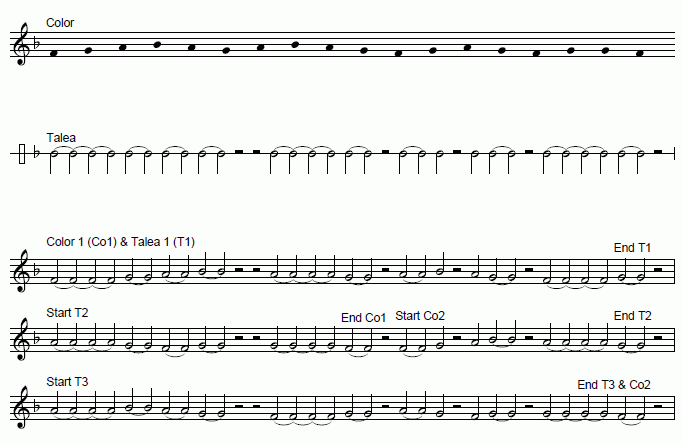| Isorhythm Isorhythm has two independent components: a melodic pattern ('color') and a rhythmic pattern ('talea'). In an isorhythmic composition, both patterns are repeated. This repetition is musically more interesting if both patterns have unequal length (in the medieval compositions the 'unequal' variant occurs along the 'equal' variant; however the 'unequal' variant became more popular). See the following example from the motet 'De bon espoir' of Guillaume de Machaut (ca. 1300 - 1377). 
The color has 18 notes. The talea has 12 rhythmical changes (without rests). Simple math shows us that three repetitions of the talea corresponds with two repetitions of the color. In other words: color and talea are then in phase. Interesting to see that Machaut now continues with a section where the note values of the talea are halved ('diminution'). Where do we find isorhythm? We find this technique in 13th century polyphonic motets (Ars Nova), but it later became more widely applied, especially in tenors and other parts of 14th- and early 15th-century compositions, motets in particular (e.g. in the work of Machaut -Messe de Nostre Dame and Dufay - Nuper rosarum flores). The technique is also found in the music of India, and in works by modern composers such as Alban Berg, Olivier Messiaen and John Cage. In 3 Volkstexte, Op.17 Anton Webern provides us a marvellous example of isorhythm. |